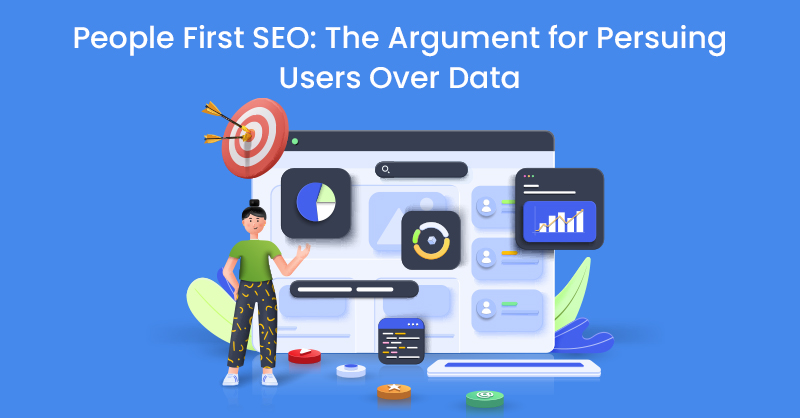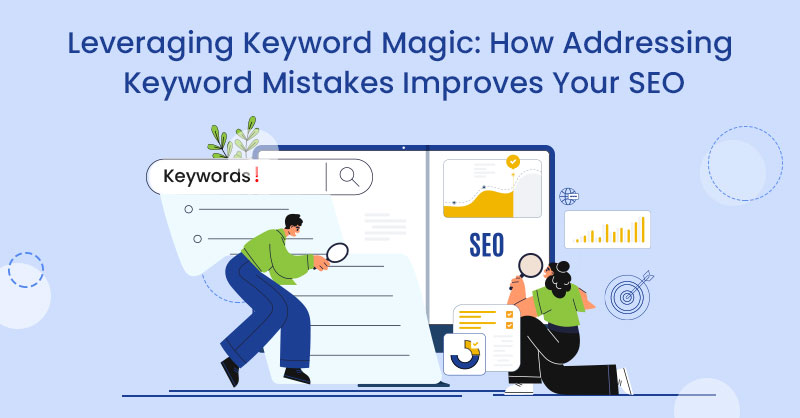When optimizing content for the web, it's easy to get bogged down in standard search engine optimization (SEO) metrics, like domain and page authority or citation flow. However, SEO isn’t just about cracking algorithms or crunching numbers to score high organic search rankings.
At the end of the day, Google is built for its users, and its algorithms are created to give users the information they want in the format they prefer.
When SEO professionals over-prioritize metrics or ranking-boosting “hacks,” they can find themselves struggling to grow their website traffic.
As Google continues to perfect its algorithm — ideally, making it match human intelligence and ingenuity — stepping into the shoes of your target audience will become more critical than ever.
Here’s why you need to stop playing the numbers game and take a people-first approach to SEO.
The Power of Search Intent
Keyword research is undoubtedly a powerful tool in boosting search engine rankings. However, it can only get you so far.
Adding too many keywords — also known as keyword stuffing — can get your web pages flagged as a bot or scam, while adding too few can prevent your site from ranking.
When creating content for your or your client’s website, your primary goal should never be to check keywords off your list or shoot for keywords with high search volumes.
Instead, your priority must be matching your content to search intent, i.e. why Google users are searching your target keywords.
So why is search intent rising above keyword volume in importance? The answer is simple: users aren’t looking for sites that simply say the right words. They’re looking for web pages that answer their questions.

When people search “how to sell a car,” they’re not looking for maintenance tips for increasing their car’s value. They want a step-by-step guide for immediately turning their vehicle into cash.
When the first result on Google matches search intent, searchers don’t have to click on any other web pages to get the information they need.
This improves the user experience (UX) for Google users. As search engine algorithms become more sophisticated and human-focused, your ability to consider a user’s purpose before finalizing your keyword strategy will be key to success.
Data as a Customer Experience Tool
Putting your attention on data isn’t always a bad thing. However, many SEO professionals fall into the trap of using data purely to identify high-performing web pages so that they can replicate their strategy.
Effectively using data for SEO is all about turning it into a customer experience tool that helps you diagnose issues with the UX of a website and make improvements that make a difference for your end users.
Focus on the data points that matter for your or your client’s goals. For example, if your client wants to improve their website traffic from search engines, you can analyze which web pages from which clients are being referred.
This encourages you to draw insights about your target audience’s interests, needs, and preferences — essentially, understanding the reason behind user behaviour on your site before taking action — rather than creating an SEO strategy exclusively based on metrics.
Your people-first approach to search engine and website data can also help your team focus on the right data.
When you want to understand how your target audience perceives your website, rather than how consumers in general view your site, internal data like customer surveys — which are specific and private to your brand — can be much more useful than public, external data.
Data is pointless if not used with a relevant audience and their experience in mind.
User Experience Determines Bounce Rates
When you wait for metrics like bounce rates and average session duration to come back before determining which web pages need improvement, your approach to SEO is entirely reactive. A people-first approach to SEO is significantly more proactive.
Optimize Your Site
When you create a user experience built especially for your end users, they’ll naturally stay on your site longer. This can boost key ranking factors — such as page speed and mobile friendliness — and help your site rank higher from the get-go.
Some components of positive UX to consider adding to your website include:
- Attractive calls-to-action;
- Bulleted lists with important information;
- Clear navigation and hyperlinks;
- Concise titles and headers;
- Consistent colorways;
- Forms that are easy to fill out;
- High-quality images;
- Internal linking;
- Mobile optimization;
- No broken pages or 404 errors;
- Useful resources.
Data can assist you in creating a stellar user experience. Still, a complete understanding of your audience and their UX preferences can more effectively help you keep users on your site and beat the competition on search engine results pages.
Try to put yourself in the users’ shoes to determine what would give them the most value from digging around your business pages.
Be Available
An optimized website is the first step, but users also need to be able to contact you quickly and easily.
Dedicated users will search for buried contact info, but it’s smart to make this information easy to find and readily available for everyone that visits your site. Ideally, place your preferred method of contact — and links to social pages, if applicable — at the top of your website.

It may be daunting to feel like you have to monitor your website around the clock. If you’re receiving an influx of messages and requests, your best bet may be to hire a team dedicated to customer service.
Even an automated response with wait time or helpful resources is better than not replying at all.
Personalize Their Experience
Humans crave customized experiences, so it’s wise to personalize your content to your target audience or even the specific user.
Personalization is key in content marketing and building a positive website experience. By personalizing your web content, you are more likely to foster:
- Brand awareness;
- Consumer engagement;
- Customer loyalty;
- Lead conversions.
You can provide personalization on your website in a myriad of ways, including:
- Automated population of user’s name in messaging;
- Personalized suggestions for articles;
- Tailored CTAs and messaging;
- “This or that” surveys;
- User profiles.
Widgets and coding can help you best determine how to personalize your website for your target audience.
A/B testing can show you which efforts work the best. Track key performance indicators like bounce rate, engagement, and conversions to see what sticks. Even the illusion of choice may boost the UX of your site, so get creative.
People-First SEO is the Future
Search engine algorithms are getting smarter by the day. As Google continues to prioritize the user experience, SEO professionals must, too.
Focusing exclusively on the numbers — whether it’s the number of keywords you include in an article or average session duration — will no longer be the most effective strategy.
Rather, keeping your specific target audience and their needs in mind is key to a successful future in search engine marketing.






on
Thankyou for this valuble content Hope will get more in the future ahead….